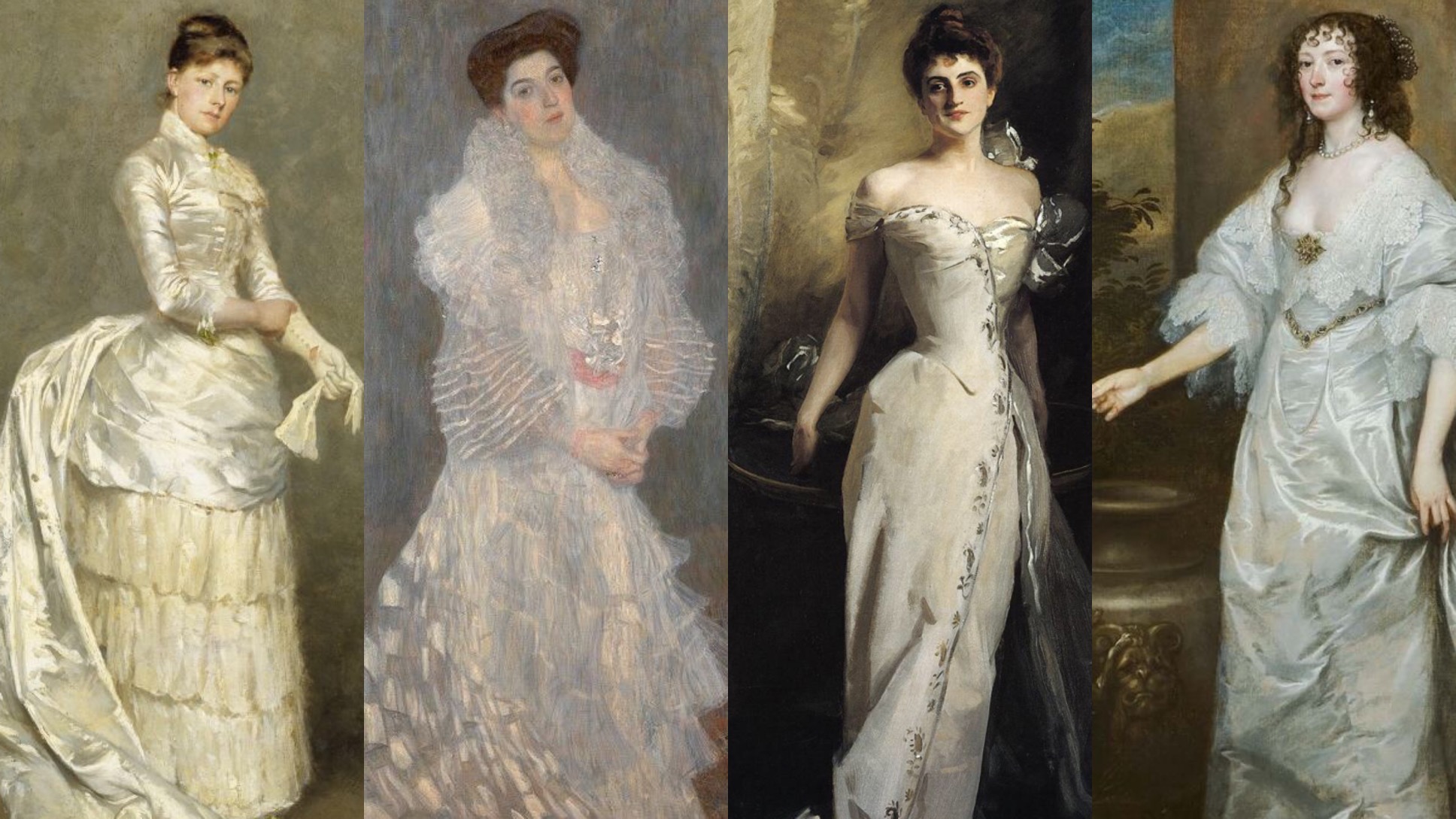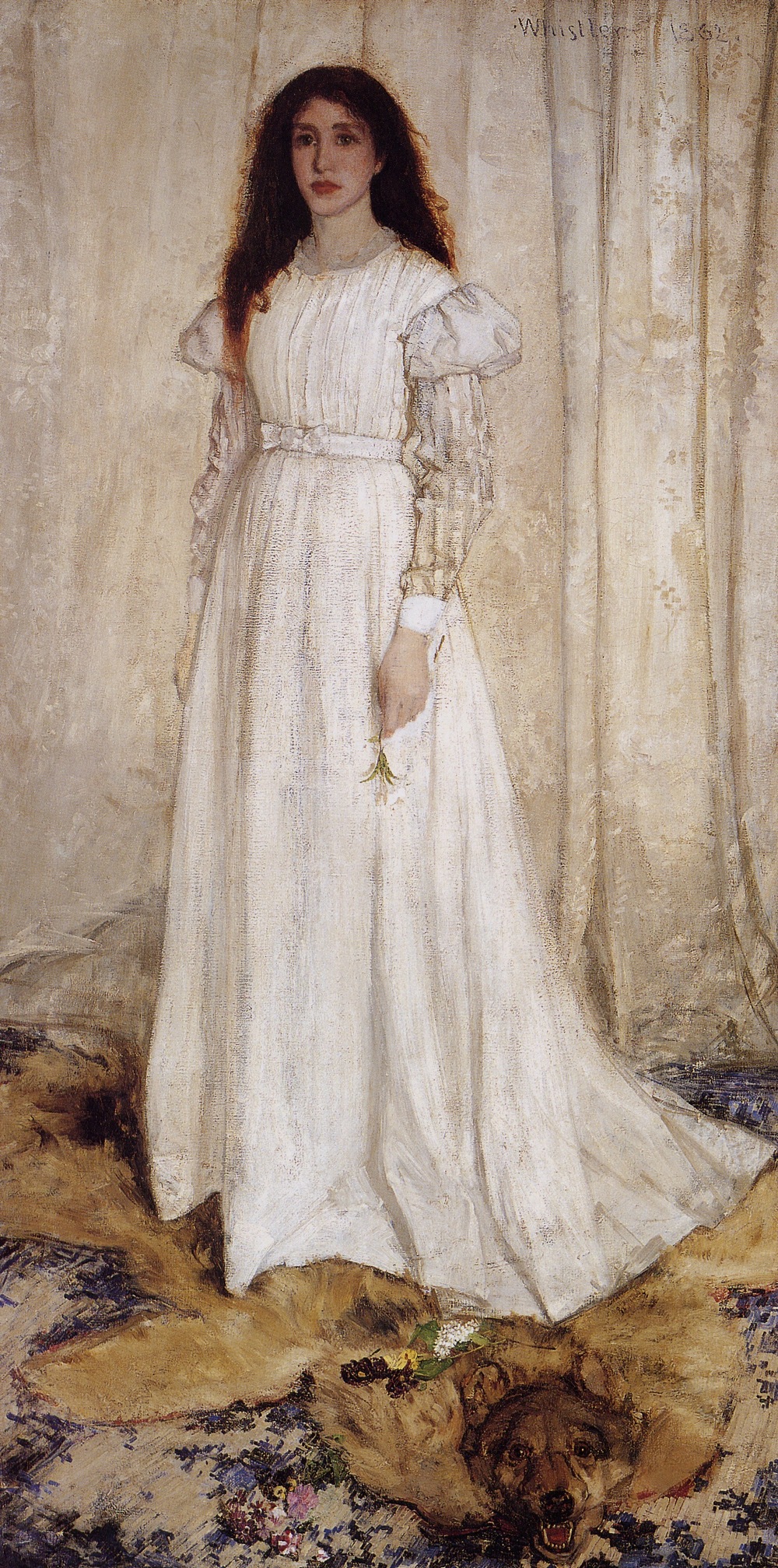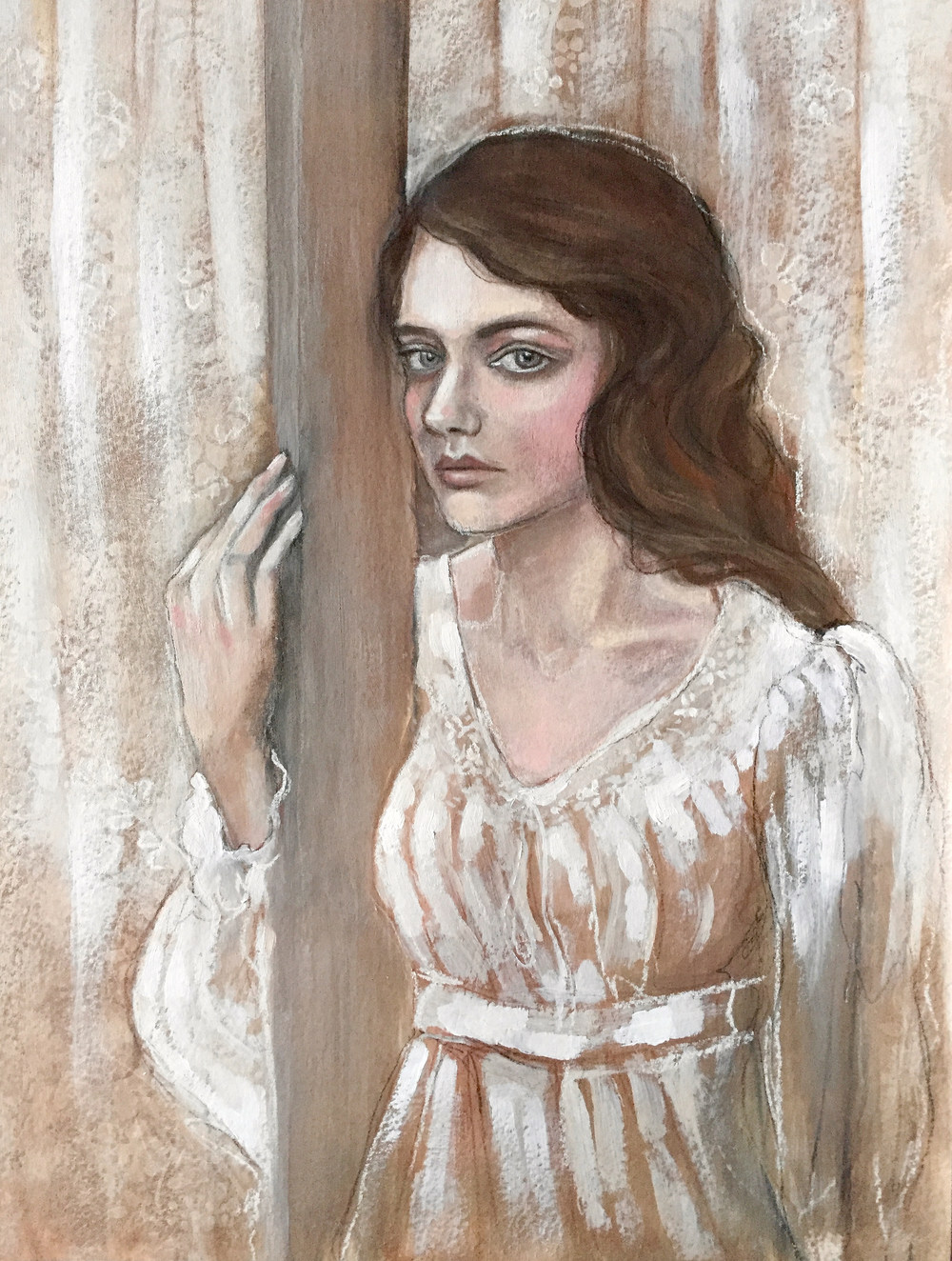Recently, I have been studying portraits of women in white dresses. Many artists throughout history chose this exact subject - not only for its pure beauty but because it is a challenge to capture the subtlety of white and its endless tones.
Look at these beautiful pieces depicting a Lady in White…

Artists: Emile Claus, Gustav Klimt, John Singer Sargent, Anthony van Dyck
We are going to studying Whistler’s painting - Symphony in White I - and this piece will serve as our inspiration for this project. Let’s learn a little more about this beautiful painting and its history.

Symphony in White, No. 1, also known as The White Girl, is a painting by James Abbott McNeill Whistler. The work shows a woman in full figure standing on a white polar bear skin in front of a white curtain with a white lily in her hand. The colour scheme of the painting is almost entirely white. The model is Joanna Hiffernan, the artist's mistress.
Whistler started working on The White Girl shortly after December 3, 1861, with the intention of submitting it to the prestigious annual exhibition of the Royal Academy. In spite of bouts of illness, he had finished the painting by April. Whistler once described the painting in a letter as...
“...a woman in a beautiful white cambric dress, standing against a window which filters the light through a transparent white muslin curtain – but the figure receives a strong light from the right and therefore the picture, barring the red hair, is one gorgeous mass of brilliant white.”
It was rejected both at the Royal Academy and at the Salon in Paris, but eventually accepted at the Salon des Refusés in 1863.
Whistler, especially in his later career, resented the idea that his paintings should have any meaning beyond what could be seen on the canvas. He is known as a central proponent of the "art for art's sake" philosophy. However, 19th-century French art critic, Jules-Antoine Castagnary saw in the painting symbols of lost innocence, a theme that has been picked up by later critics.
Art historian, Wayne Craven also sees the painting as more than a formalist exercise, and finds "enigmatic, expressive and even erotic undercurrents" in the image. He points to the contrasts presented by the imagery, with the white lily representing innocence and virginity, and the fierce animal head on the rug symbolising the loss of innocence.
Beryl Schlossman, coming from the perspective of literary criticism, sees allusions to the Madonna of religious art in the work. To Schlossman, the rug under the woman's feet is the cloud on which the Virgin is often seen standing, and the bear is the serpent, crushed under her heel.
The panel is long and slender, and the model's pose and the shape of her clothing further emphasizes the vertical nature of the painting. The woman is bold, almost confrontational, in her direct gaze at the viewer. The patterned rug and flooring is a direct contrast to the flowing white on white fabric seen in the dress and draperies. The viewer is immediately drawn into her face and then follows her hand down to the flower she grasps. The perfectly placed vertical fold in her dress in line with her hand, leads the eye down to the fallen blooms and finally the cold gaze of the bear rug.

What do you see in this painting? How does it make you feel? What compositional elements are you especially drawn to? Spend some time with this piece and then get your art supplies out because we are going to create our own Lady in White portrait.
You will watch me create mine in Acrylic paint and pastel. She goes through many stages (some scary!) but I am very happy with how she emerged.
If you are not comfortable drawing your face or figure, feel free to trace something or do an image transfer. This is about creative expression not skill level. No matter what your experience, you have the right to create so use whatever tools you need to get there. No shame, no apologies. If you need help, I’m here.
The compositional focus of this project is harmony, balance and emphasis. Use the rule of thirds when you design your composition to create visual balance and tension. Creating soft shades of whites and neutrals will give the piece harmony but don’t forget emphasis. Use contrast to bring focus to the piece and draw the viewer into the portrait.
Ok, let’s get started!
***Oh and I mention a portrait drawing technique in the next video - the "Loomis" technique - you can watch a video about that HERE**
**If you find the pastel is not sticking to the acrylic paint, use a thin layer of clear gesso over that area, dry and then proceed. The clear gesso will give the paint layer more "tooth" which will help the pastels better adhere to the surface.**

Take this project slow, it took me a full two days of painting to get to a place of completion and I could still probably keep working on her. ;) Use the mediums you like or use my choices. It’s up to you. Work in a style you like, stylized, expressionist or realistic.
Mine became rather expressive and stylized with her hand slightly enlarged to suggest a stronger hold to the wooden post she clings to. Perhaps, she is worried she might just get swallowed up by all that white and cream! ;)
I hope you all enjoy creating your Lady in White Portrait! I can’t wait to see them so don’t forget to post to the Facebook group!
Need inspiration? Go check out our Shades of White Art Inspiration Pinterest Board that I've curated just for you.